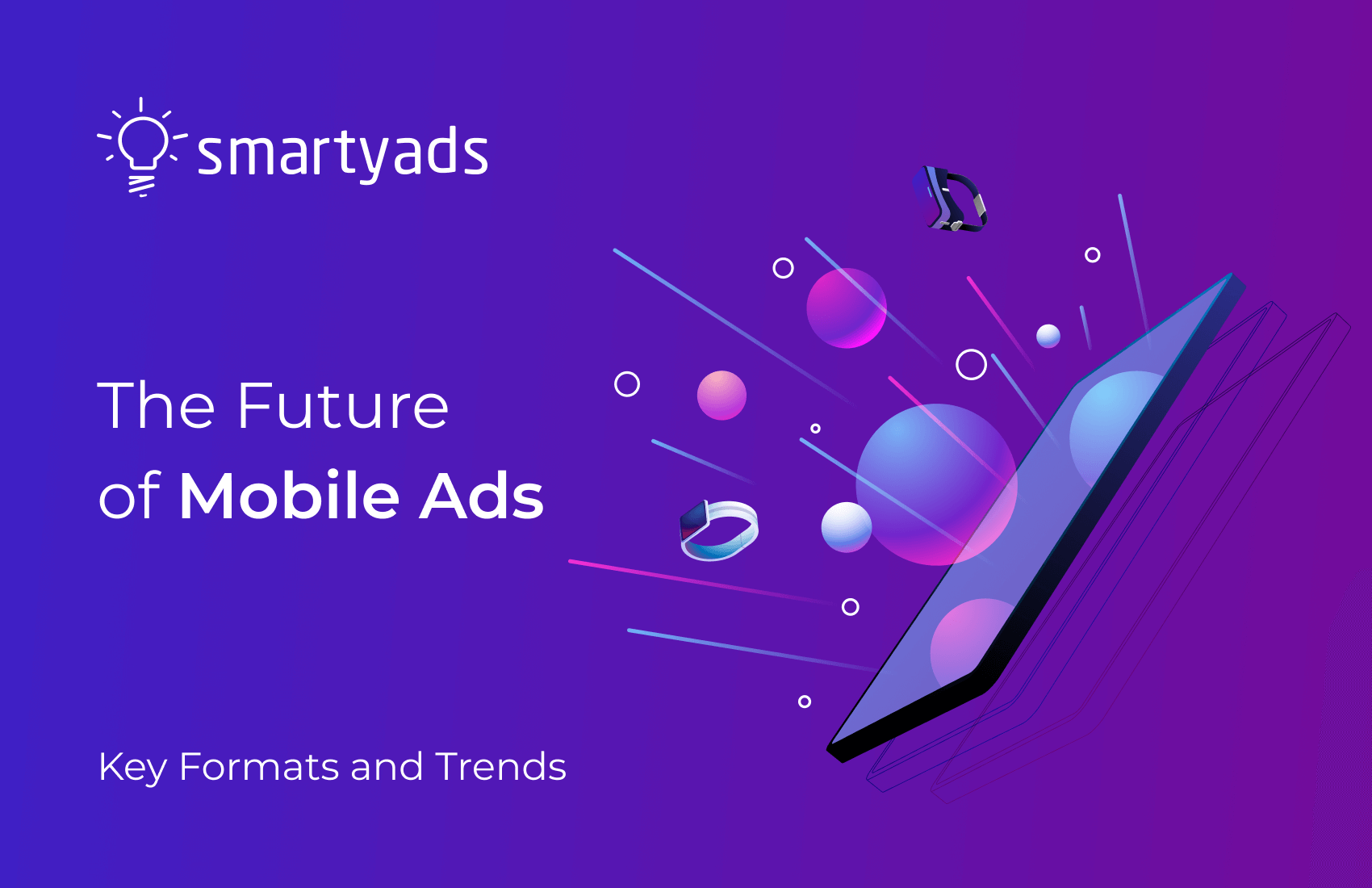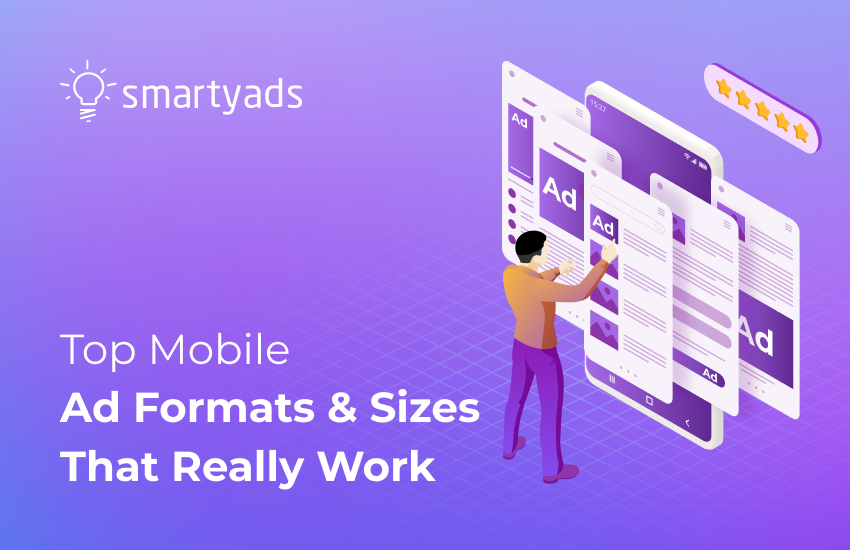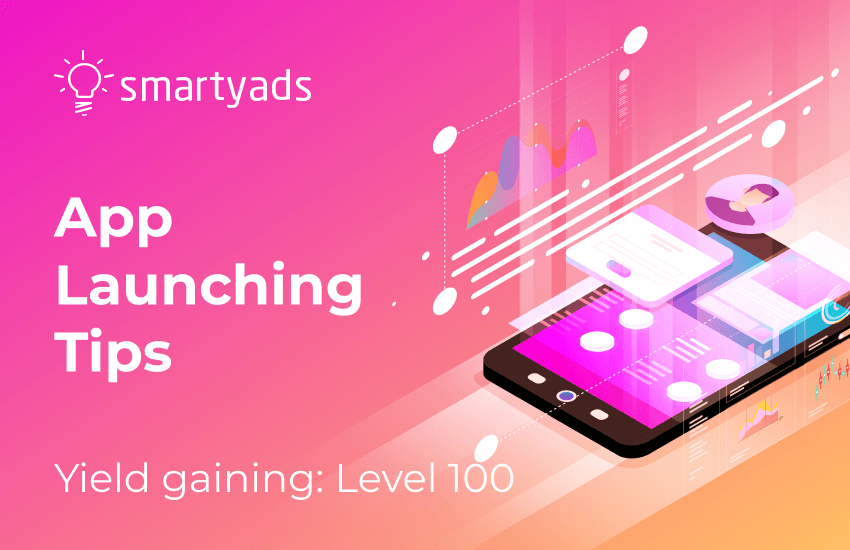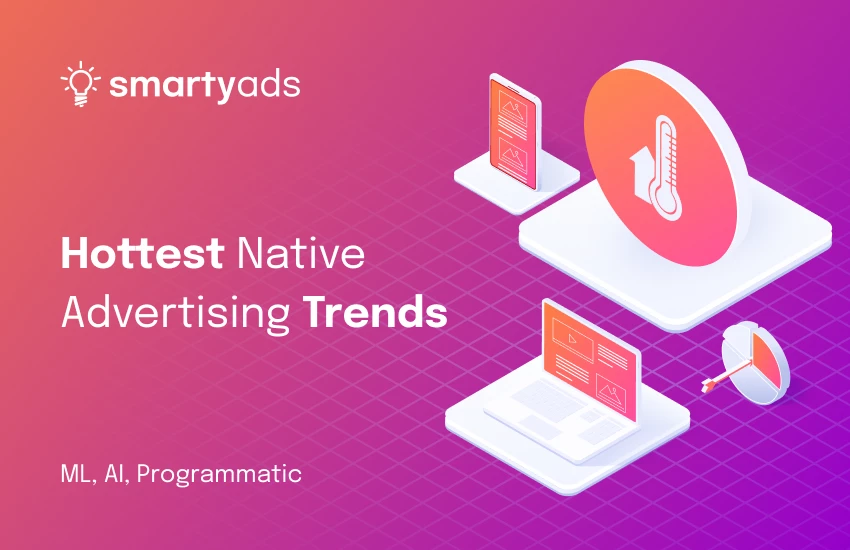Remember when Apple's iOS 14.5 update sent shockwaves through the ad tech community? Fast-forward to 2025, and what initially felt like an industry apocalypse has become the catalyst for the future of mobile ads.
Here's what caught my attention: while privacy advocates celebrated the death of invasive tracking, mobile ad spend in the US soared past $200 billion—more than half of all media dollars. The supposed contradiction isn't a bug; it's a feature of an industry that's learned to thrive within constraints.
The numbers paint a compelling picture. Mobile commerce will reach $2.5 trillion in 2025, capturing 60% of e-commerce sales, while the global mobile marketing market expands at 18% annually toward a projected $57.85 billion by 2030. Meanwhile, contextual advertising is replacing behavioral targeting, and in-app purchases surged 20% in non-gaming verticals.
We're witnessing something remarkable: an industry reinventing itself not despite privacy restrictions, but because of them. What follows are the trends that smart advertisers are already leveraging—and the strategies that will separate the winners from the wishful thinkers in 2025's view of the future of mobile marketing.

Why Mobile Advertising Will Dominate the Digital Landscape
Mobile advertising continues to demonstrate unprecedented growth, establishing itself as the dominant force in digital marketing. Current market data and projections reveal compelling reasons for this continued dominance future of mobile ads:
- Record-Breaking Market Values: In 2024, mobile ad spend in the U.S. surpassed $200 billion for the first time, reaching $202.59 billion, which marked a 14.4% year-over-year increase
- Massive Global Market Growth: Mobile Advertising Market was valued USD 312.31 Bn in 2023 and is expected to reach $743.91 Bn by 2030, at CAGR of 13.2%
- Sustained Long-term Projections: According to projections by IMARC Group, this market is anticipated to grow to $533.6 billion by 2032, with a compound annual growth rate (CAGR) of 10.7% spanning from 2024 to 2032
- Dominant Share of Digital Spending: US mobile ad spending will cross $200 billion this year, representing over half (51.2%) of total media dollars spent in the US and nearly two-thirds (66.0%) of digital ad dollars
- Expanding Device Ecosystem: The global landscape of mobile devices is rapidly expanding, with the number of devices projected to reach 17.72 billion in 2024 and 18.22 billion by 2025, up from 14.02 billion in 2020
Mobile Advertising Market Growth
| Year | Global Mobile Ad Spend (Billions USD) | US Mobile Ad Spend (Billions USD) | Year-over-Year Growth |
| 2020 | - | $120.0 | - |
| 2022 | $327.1 | - | 17.2% |
| 2024 | $399.6 | $202.59 | - |
*Data sourced from Statista Research Department, May 16, 2024
Top Future Mobile Advertising Trends to Watch
The mobile advertising has reached a critical inflection point. After years of experimental approaches and fragmented strategies, we're witnessing the consolidation of technologies and methodologies that will define competitive advantage for the next decade of the future of mobile marketing.
1. Algorithmic Campaign Management
Programmatic platforms have evolved beyond simple automated bidding. Current systems analyze 150+ behavioral signals in real-time, adjusting creative rotation, audience targeting, and budget allocation based on conversion probability models. The sophistication level now allows for campaign self-optimization at a granular level previously requiring manual intervention.
This shift fundamentally changes resource allocation. Media buying teams can redirect focus from tactical bid management to strategic creative development and audience insight generation. The operational efficiency gains are substantial—campaign setup time reduced by 60%, while performance optimization occurs continuously rather than in weekly review cycles.
Key Statistics: AI-driven programmatic platforms can make real-time adjustments to ad placements, targeting, and spending based on live data and predictive insights.
SmartyAds Tip: Leverage AI-driven programmatic platforms to automate campaign optimization and reduce manual bid management while maximizing ROI through predictive audience targeting.
2. 5G Infrastructure Impact
Network latency reduction to sub-10 milliseconds enables advertising formats that were technically impossible under 4G constraints. High-definition video streaming, complex interactive elements, and real-time rendering become standard rather than premium features.
The implications extend beyond creative possibilities. User experience standards will increase dramatically. Ads that previously seemed sophisticated will appear dated when users expect instant loading and seamless interactivity. This creates both opportunity and risk—early adopters gain competitive advantage, while late adopters face user experience penalties.
Key Statistics: 5G networks deliver download speeds exceeding 20GB, enabling seamless high-quality video and AR/VR advertising experiences.
SmartyAds Tip: Prepare your creative assets for 5G by developing high-resolution video content and interactive ad formats that leverage increased bandwidth capabilities.
3. Video Content Optimization
In-app video advertising reaching 30% market share represents more than growth—it indicates user preference evolution. Video consumption patterns show clear bias toward mobile-optimized content, with vertical formats generating 35% higher completion rates than horizontal adaptations.
The performance gap continues widening. Video ads consistently outperform static alternatives across engagement metrics, but more importantly, they demonstrate superior conversion tracking accuracy. Video interaction data provides granular insights into user interest levels and purchase intent signals.
Key Statistics: In-app video ads represented over 30% of US mobile ad spending in 2024, marking a significant milestone in mobile advertising evolution.
SmartyAds Tip: Prioritize short-form vertical video content optimized for mobile viewing to capitalize on the growing preference for video-first mobile experiences.
4. Data-Driven Personalization
Current personalization capabilities operate on behavioral prediction models with significant accuracy rates. This enables dynamic creative optimization where ad elements adjust based on user profile matching and contextual factors. The technology has matured beyond demographic targeting to predictive interest modeling.
However, effectiveness depends heavily on data quality and collection methodology. Brands with robust first-party data strategies demonstrate higher personalization performance compared to those relying primarily on third-party sources. The competitive advantage increasingly stems from proprietary user insight generation.
Key Statistics: Personalized mobile ads show higher engagement rates compared to generic advertising campaigns.
SmartyAds Tip: Implement dynamic creative optimization (DCO) to automatically personalize ad elements based on user demographics, behavior, and preferences in real-time.
5. Interactive Advertisement Evolution
Playable ads achieving 7x conversion improvements reflect user engagement preference rather than novelty effect. Interactive formats provide product experience before purchase commitment, effectively reducing decision-making friction and buyer hesitation.
The format particularly benefits app marketing and product demonstration scenarios. Users gain functional understanding through direct interaction, leading to higher-quality acquisitions and improved retention rates. The additional development investment typically generates positive ROI within 30-60 days.
Key Statistics: Playable ads achieve 7x higher conversion rates compared to traditional display advertising formats.
SmartyAds Tip: Experiment with playable ad formats for app marketing campaigns to showcase your product's core functionality and drive quality user acquisition.
6. Augmented Reality Commercial Applications
AR advertising has moved beyond experimental phases into measurable commercial impact. Virtual try-on experiences reduce return rates by 25-40% across fashion and beauty categories, while product visualization tools increase purchase confidence scores significantly.
The technology addresses fundamental e-commerce limitations—spatial understanding and product fit assessment. When users can accurately preview purchases in their actual environment, conversion barriers decrease substantially. Implementation complexity has decreased while performance reliability has improved.
Key Statistics: AR advertising campaigns generate 94% higher conversion rates than traditional mobile ads.
SmartyAds Tip: Develop AR-enabled ad creatives for fashion, furniture, and beauty products to provide immersive shopping experiences that reduce purchase hesitation.
7. Privacy-Compliant Targeting
Regulatory changes and platform policy updates have accelerated privacy-first advertising adoption. Brands successfully transitioning to consent-based targeting maintain performance levels while building user trust metrics that correlate with long-term customer value.
The shift requires operational restructuring rather than simple technical adjustments. Customer relationship management becomes central to advertising effectiveness, with permission-based targeting often outperforming invasive alternatives in engagement quality metrics.
Key Statistics: 86% of consumers express concerns about data privacy, driving demand for transparent, consent-based advertising approaches.
SmartyAds Tip: Build robust first-party data collection strategies through engaging opt-in experiences to maintain effective targeting while respecting user privacy preferences.
8. Premium Programmatic Marketplace Growth
Private marketplace transactions expanding to 66% of programmatic spending indicates quality prioritization over volume-based approaches. Brand safety concerns and inventory quality requirements drive preference for curated advertising environments.
This evolution benefits both advertisers and publishers. Advertisers gain access to premium contexts while publishers maintain higher revenue per impression. The relationship model shifts from transactional to partnership-based, enabling collaborative campaign optimization.
Key Statistics: Private marketplace transactions expanding to 66% of programmatic spending.
SmartyAds Tip: Establish preferred partnerships with premium publishers through private marketplace deals to secure high-quality inventory and improve campaign performance.
9. Voice Search Integration
Voice search representing third of mobile queries creates optimization requirements extending beyond traditional SEO approaches. Audio advertising formats and voice-activated response systems become necessary for comprehensive mobile marketing coverage.
The format challenges traditional creative development processes. Audio-only advertisements require different engagement techniques and success metrics compared to visual formats. User behavior in voice environments differs substantially from screen-based interactions.
Key Statistics: Voice search accounts for 27% of all mobile searches, creating new opportunities for audio-first advertising strategies.
SmartyAds Tip: Optimize your mobile campaigns for voice search queries by incorporating conversational keywords and developing audio-first creative strategies.
10. Cross-Platform Attribution Systems
Multi-device user journey tracking has achieved technical maturity enabling accurate conversion attribution across platforms and timeframes. This visibility allows budget optimization based on actual influence rather than last-click assumptions.
The measurement improvement directly impacts campaign profitability. Understanding true customer acquisition costs and conversion path complexity enables more sophisticated budget allocation and creative strategy development. Cross-platform insights often reveal surprising customer behavior patterns.
Key Statistics: Multi-touch attribution models improve campaign ROI measurement accuracy compared to last-click attribution.
SmartyAds Tip: Implement unified measurement frameworks that track user interactions across all touchpoints to optimize budget allocation and improve campaign performance.
11. Mobile Commerce Integration
Mobile commerce projected to reach $2.5 trillion globally represents more than growth—it indicates fundamental commerce behavior shift. Mobile-first purchasing experiences require advertising formats optimized for immediate conversion rather than awareness building.
The advertising-to-purchase pathway compression demands different creative strategies and user experience design. Friction elimination becomes paramount, with every additional step reducing conversion probability. Seamless integration between advertising and commerce platforms becomes competitive necessity.
Key Statistics: Mobile commerce transactions are projected to reach $2.5 trillion globally by 2025, representing 63% of all e-commerce sales.
SmartyAds Tip: Integrate seamless checkout experiences directly within your mobile ad formats to reduce friction and maximize conversion rates.
12. Contextual Advertising Resurgence
Contextual targeting achieving 63% purchase intent improvements in privacy-compliant environments validates content-adjacent advertising strategies. This approach aligns advertising with user interests without personal data collection requirements.
The methodology requires sophisticated content analysis and real-time placement optimization. Success depends on accurate content categorization and creative relevance matching. When executed effectively, contextual advertising feels natural rather than intrusive.
Key Statistics: Contextual advertising campaigns show 63% better purchase intent in privacy-compliant environments compared to behavioral targeting.
SmartyAds Tip: Develop contextually relevant creative assets that naturally align with app content and user intent to maintain targeting effectiveness without relying on personal data.
How to Future-Proof Your Mobile Advertising Strategy
Given this rapidly evolving landscape where mobile advertising has transformed from privacy restrictions into innovation opportunities, marketers need actionable strategies that can adapt to continuous change while maximizing the $200+ billion mobile ad opportunity. Here are four expert-backed approaches to building a future-ready mobile ad strategy that thrives in today's privacy-first, AI-driven environment.
Master AI-Powered Programmatic Optimization
With AI now enabling real-time campaign adjustments and predictive analytics, the future of mobile ads belongs to marketers who can harness machine learning for smarter user acquisition and retargeting. Implement AI-driven demand-side platforms that automatically optimize bid strategies, audience targeting, and creative delivery based on live performance data. This means moving beyond manual campaign management to embrace automated systems that can analyze vast datasets, predict user behavior patterns, and adjust spending in real-time. Companies that integrate AI-powered programmatic advertising now will gain significant competitive advantages through improved ROI and reduced manual overhead.
Build a Privacy-Compliant First-Party Data Ecosystem
With 86% of consumers expressing privacy concerns and contextual advertising showing 63% better purchase intent in privacy-compliant environments, your data strategy must prioritize transparency and consent. Focus on creating engaging opt-in experiences that encourage users to share their information voluntarily through loyalty programs, personalized app experiences, and value-driven content. Develop robust first-party data collection systems that can deliver the 3x higher engagement rates seen with personalized mobile ads while respecting user privacy preferences..
Embrace Next-Generation Creative Formats and Technologies
The convergence of 5G networks, AR technology, and interactive ad formats is creating unprecedented opportunities for immersive brand experiences. Prepare high-resolution video content and interactive ad formats that leverage 5G's increased bandwidth capabilities, while experimenting with playable ads that achieve higher conversion rates than traditional display formats. Invest in AR-enabled creative development, particularly for fashion, furniture, and beauty products, where AR advertising campaigns generate higher conversion rates. The future of mobile ads is developing modular creative systems that can quickly adapt to new formats while maintaining brand consistency across immersive experiences.
Implement Unified Cross-Platform Measurement
As user journeys become increasingly complex across devices and platforms, accurate attribution becomes your competitive advantage. Deploy multi-touch attribution models that improve campaign ROI measurement accuracy compared to last-click attribution. This includes integrating voice search optimization (now 27% of mobile searches), mobile commerce tracking (projected to reach $2.5 trillion by the end of 2025), and seamless cross-device user identification. Build measurement frameworks that can track the complete customer journey from initial awareness through mobile commerce conversion, enabling you to optimize budget allocation across the entire marketing ecosystem.
Afterword
The numbers don't lie. While everyone worried about iOS 14.5 killing the industry, mobile ad spend hit $200+ billion and keeps climbing. People didn't just embrace mobile during the pandemic—they never went back.
What separates successful advertisers from the rest? They stopped fighting privacy changes and started leveraging them. AI-powered programmatic has become essential for serious user acquisition. First-party data collection through genuine value exchange outperforms invasive tracking consistently.
The creative formats that seemed experimental two years ago—playable ads, AR experiences, contextual targeting—now drive the highest conversion rates. With 5G enabling richer experiences and mobile commerce hitting $2.5 trillion, the infrastructure finally matches consumer behavior.
The $743 billion mobile advertising market by 2030 belongs to advertisers who build for privacy-first, AI-driven campaigns today and an even brighter future of mobile ads. Your current foundation determines whether you capture that growth or lose market share to competitors.
Make your mobile ads future proof. Advertise on SmartyAds DSP!

FAQ
AI-powered programmatic optimization, AR/VR integration, and contextual advertising lead the charge. 5G networks enable richer video experiences, while playable ads achieve 7x higher conversion rates. Voice-activated advertising and privacy-first strategies dominate as mobile commerce reaches $2.5 trillion. Smart advertisers leverage these trends for maximum ROI.
Absolutely! Contextual advertising shows 63% better performance in privacy-compliant environments. First-party data strategies deliver 3x higher engagement rates than generic campaigns. The shift from behavioral to contextual targeting has actually improved ad relevance and consumer trust, making mobile advertising more effective than ever.
AI transforms mobile advertising through real-time bid optimization, predictive analytics, and automated campaign management. Machine learning enables personalized ad delivery at scale while reducing manual overhead. By 2025, AI-driven platforms will be essential for competitive user acquisition and campaign performance optimization.


![In-App Advertising: the Complete Guide [Updated 2025]](/storage/uploads/2020/september/in-app-advertising-trends.png)

